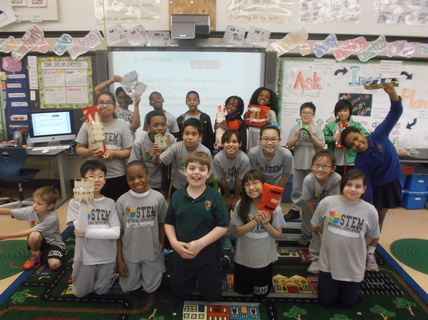
Who knows...maybe one of these fourth graders will be designing biomedical technology for us in the future! Way to go fourth graders!
Biomedical engineering is an exciting, innovative field of engineering. Solving problems related to the human body, biomedical engineers need to know about the human body in order to develop the technologies people need who are either sick or injured. While they are not doctors or nurses, they work closely with the medical field to serve patients who need help! Biomedical engineers also make sure they collect data on the individuals who are going to use their technologies!
 After using the engineering design process, fourth graders were able to determine which of their two knee brace designs better met the criteria of the challenge. Some were able to put their braces on quicker than others, some used less materials, and others were more durable after completing the range of motion tests. Who knows...maybe one of these fourth graders will be designing biomedical technology for us in the future! Way to go fourth graders! Working through the engineering design process, fourth graders are testing out each of the knee brace designs they've created, making improvements based on the data they collect from their tests. Did the knee (with the knee brace) move as it was supposed to? Did it take longer than they anticipated it should take to put it on? Was it durable enough to last wearing over and over again? Working in teams, fourth graders will try to improve their knee brace designs to get the optimal score--meaning it met the criteria of the challenge.
Way to go biomedical engineers! 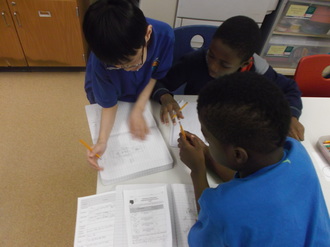 With each member of a team brainstorming at least two knee brace designs, teams are now collaborating and deciding upon what their first knee brace design should be. Should they combine ideas? Settle on one person's idea? Or design something new once everyone shares their thoughts? Once their knee braces are created, fourth graders will be testing their designs to make sure they have the right range of motion, are usable within a specific time frame, and are durable! 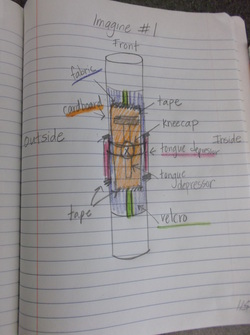 Now that fourth graders have explored all the properties available to use in their knee brace designs, they've spent time imagining what their knee brace designs should look like. Creating carefully crafted diagrams, they must follow the following criteria: 1. The brace must allow for a healthy range of motion of the injured knee. 2. It has to be easy to use (Take it on/off in under a minute) 3. It must be durable (It must last after putting it on/off over and over again)! Check out their first brainstormed knee brace designs below! When thinking about creating a knee brace, it's important to know the available materials! Fourth graders know that the materials they'll be using to design a knee brace will be quite different than the materials they've used otherwise this year like when cleaning up an oil spill or designing a Maglev.
We're spending some time really thinking about the properties of the available materials, and more importantly, how those materials can change to be used in a knee brace design. Can they be cut? Folded? Layered? Are they rigid? Flexible? Smooth? We're thinking about ALL these factors! Fourth graders are steps closer to designing their own knee braces for an unhealthy knee. But what do they need to know about knees in general before they begin designing a knee brace?
In a class discussion, fourth graders determined that it's important to figure out how a knee moves, both when it's healthy and when it's unhealthy. This way, when they go to design a brace, they know how the brace should either help or restrict the unhealthy knee's movement. Students used a special tool to collect data on both types of knees. This tool is known as a goniometer and measures the range of motion for a knee in four directions: backwards, forwards, to the left, and to the right. With careful data collection, fourth graders discovered that their model injured knees could move in two directions that a healthy knee could not move--forwards and towards the outside (extending beyond a normal range of motion). After collecting our data on our arches, we're officially making a recommendation to Fast Feet Shoe Company on the number and types of arches they should make in their shoe models. Some students are recommending as few as three groups, and others are recommending as high as five groups. We'll be sending our letters off this week to the Museum of Science in Boston where Fast Feet Shoe Company is located!
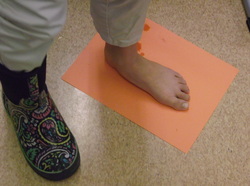 Now that we've finished our biomedical engineering story, fourth graders are investigating how biomedical engineers collect and analyze data. Data collection and analysis informs their decisions regarding designing technologies. Our fourth graders have been contacted by Fast Feet Shoe Company, and they're requesting some help regarding arch heights. In order to recommend the number and type of arch height models they make for their shoes, it's important that we collect arch height data. Fourth graders will then take the data and organize it into groups that contain similar arch heights. Each arch height will have a name and Fast Feet Shoe Company will take their recommendation into consideration. Why will it be so important that there are different arch heights in their shoes? Doesn't everyone buying a pair of shoes to be comfortable when they walk/run? 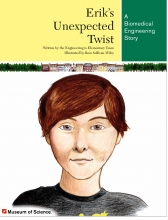 Erik is a young boy living in Germany, confronted with going on a dreaded camping trip. Let's just say that Erik is not the best camper there is out there! Also attending the camping trip is a longtime friend (or maybe not), Matthias. While camping, everyone goes on a hike. Before they know it, Matthias...and NOT Erik, has injured himself. Can Erik help prove that he is a good camper and use some biomedical engineering skills to help Matthias through his injury? We hope so! Key Vocabulary: brace, cast, materials, properties, biomedical engineer, engineering design process, technology, tendon, ligament, bone, joint, and muscle. 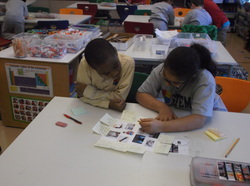 Breaking down the word biomedical into its prefix--"bio" and its base word "medical," fourth graders were able to see how biomedical refers to both life and medicine! In a "get-to-know-you" type situation, fourth graders were shown images of biomedical engineers in action or the technologies they help design and develop. Asking questions and providing statements of what they knew, fourth graders shared their insight into what they think biomedical engineering is all about! |
Mrs. BrinzaI love what I do! Archives |